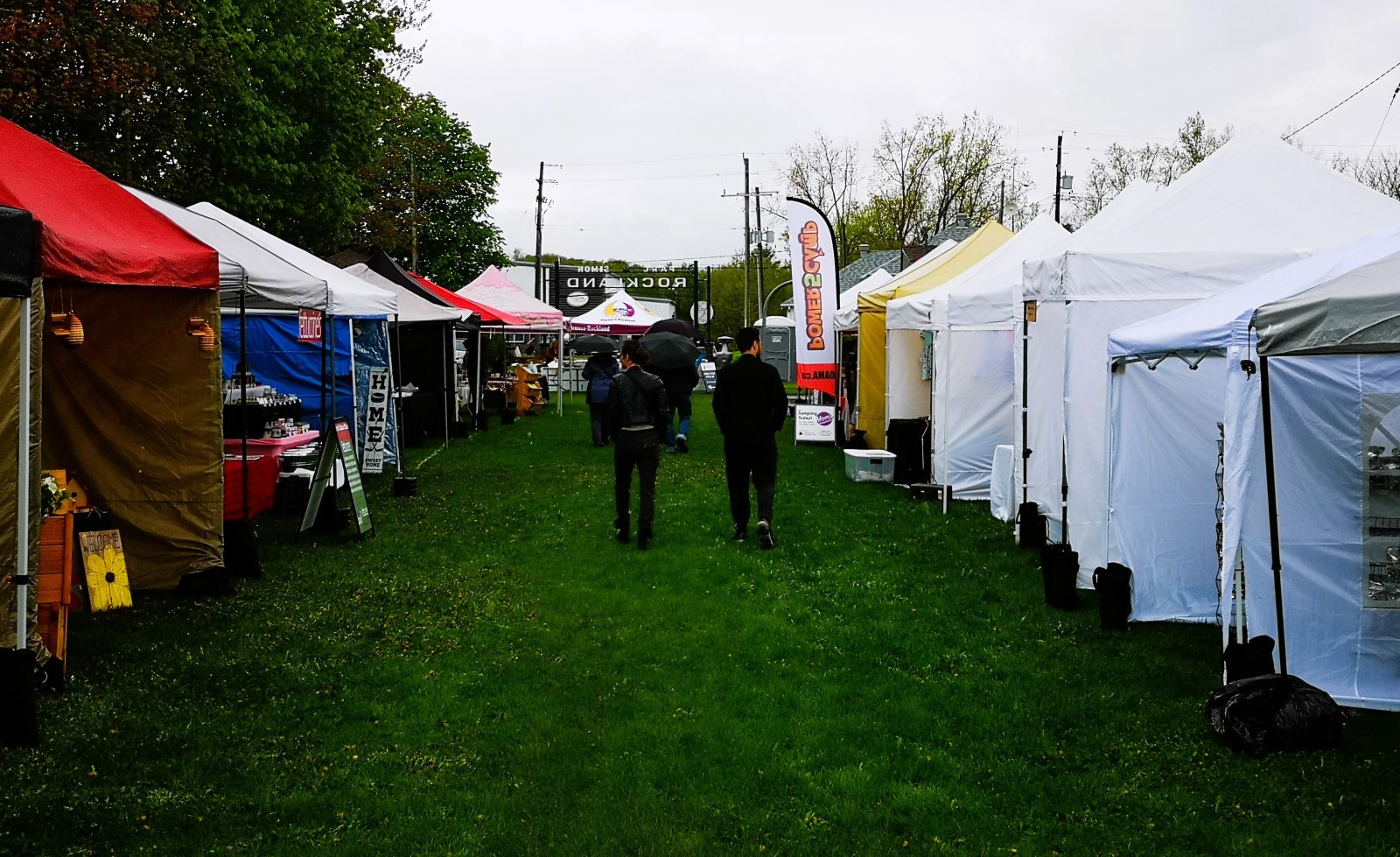A forecast for intermittent rain throughout a coolish day and gloomy overcast skies and drizzle didn’t dampen spirits too much for the first CR Market of 2024 this past Sunday.
The collection of two rows of vendors in Simon Park settled beneath their canopies sheltered and dry and ready to sell their goods despite Mother Nature: as the saying has it, the show – and the market – must go on.
At their most basic, urban markets are meeting places where farmers and producers engage in commercial transactions with customers through bartering and trading, in much earlier days, and eventually through the exchange of money today.
Whatever the manner of business, for hundreds of years markets have always been a site of urban and rural interaction.
While it was once essential a long time ago for city residents to head to urban farmers’ markets for fresh food, the advent of the automobile, public transit and massive “supermarkets” heavily laden with shelves of food from around the world sent the humble, quaint – and local – farmers’ market into a semi-retirement.
The dynamics are complex, but in the last, say, 25 years – a tiny blip of time compared to the long arc of market history – there has been a distinct renaissance of sorts of farmers’ markets.
To isolate just one reason is reductive, but I will point out that in 2007 Alisa Smith and J.B. MacKinnon published “The 100-Mile Diet: A Year of Local Eating,” an account of their search for local sustainable ingredients for their home kitchen from small, unique producers within a circumscribed area that is now generally accepted as defining “local.”
Truth be told, city markets have been doing that for centuries.
The CR Market, which just kicked off its summer schedule, is an initiative of the City of Clarence-Rockland following an economic development study.
The Market is in its third year, and it does precisely what urban markets have always done: connect producers and growers with an urban community for the purchase of food and other goods and products.
Clarence-Rockland communications officer Julie Chartrand says Market attendance in previous years has been strong and that 32 vendors had registered for the May 12 market.
The city had a variety of tree saplings and plants displayed on tables available for market shoppers to take away at no cost; a local outlet of a frozen-food retail chain had their barbecues fired up and running as well.
The obvious benefit is of a market is mutual: producers get to sell their wares and shoppers at the market get to purchase locally made foods and products. That makes the transaction a “showcase” opportunity for the businesses, according to Chartrand.
“Local and regional businesses that are not brick-and-mortar or not fronting on the main street get to sell their products,” she said.
No matter what city you visit and no matter its size – Montreal, Saint John, Victoria or Clarence-Rockland – markets support and build local economies which are made up of primarily small businesses that in many cases, but not exclusively, provide access to fresh, healthy food.
Buying local products can reduce the environmental impact of transportation of goods, and access to farmers’ markets, especially, give urban centres a way to mitigate the “dietary damage” done by food deserts wherever there is a lack of access to nutritious food among vulnerable populations.
While we are very early in the 2024 harvest – the first crop, of course, just behind us with maple syrup – fiddleheads, ramps, rhubarb and asparagus are harbingers of early summer when it comes to the food component.
During my tour of this first early CR Market, I found a Rockland-based coffee roaster – granted, coffee is not local but the people who roast it are – jars of honey, baked goods and sweets, ready-made Italian dishes, maple syrup, condiments, snacks for dogs and assorted and sundry crafts.
While that historic commercial transaction that reaches back centuries was obviously apparent and customers were buying these local products, there was another dynamic at play rather than just retail: a social one.
The impersonality of a grocery store – no farmers, no growers, few if any real butchers, no cooks – makes buying food not only often more expensive but soulless, too.
At the market, however, there is a social dynamic that blooms as customers can talk to producers and growers; producers and growers, for their part, can also connect and talk to other like-minded entrepreneurs.
It’s an opportunity for customers to learn about farming, for instance, and how things grow and are made, perhaps as well understanding the difficulties and obstacles of getting products to market, even if there’s not the middleman of giant terminals for distribution.
It’s also a chance to chat with your neighbour, and I expect these dynamics to grow as the summer rolls in.
Chartrand agreed that there is more than business being done, noting that there’s education and the person-to-person connection that I mentioned earlier at an historic site of human interaction.
“The Market is a meeting place for the community and a place for residents to talk and learn about the businesses in the region and to discover more about them.”
The CR Market takes place the second Sunday of every month from May to September, in and around the walking path in Simon Park, 1450 Du Parc Avenue. For more information, visit https://www.clarence-rockland.com.



